Manage Exchange Server 2007 using Windows XP workstation
Install Exchange Management Tools (Exchange management tools) on a workstation running Windows XP.
Some administrators don't like to use Terminal Services sessions to manage their Exchange Server environment. In this article, we will show you how to install the Exchange Management Tools on a workstation running Windows XP 32bit.
Currently, there is no support for installing Exchange Management Tools on Windows Vista. If you are running Vista, you must wait for the release of Exchange Server 2007 Service Pack 1 version.
If you run Windows XP x64 bit, you can find out some documents but use x64 Tools. In this article, we only focus on 32-bit Windows XP computers.
In order to achieve the objectives, the following steps must be taken:
1. Install common core files for IIS on the workstation
2. Install .NET Framework 2.0
3. Install hotfixes (hotfixes) for the .NET Framework 2.0
4. Install Microsoft Management Console (MMC) 3.0
5. Install Windows PowerShell
6. Install Exchange Server 2007 on a Windows XP workstation
Install common core files for IIS
The first step is to install common core files for IIS on the workstation by doing the following:
1. Click Start
2. Select Settings
3. Select Control Panel
4. Double-click Add or Remove Programs
5. Click Add / Remove Windows Components on the left
6. Select Internet Information Services (IIS) and click on the Details button . (Figure 1)

Figure 1: Click on the Details button of the Internet Information Services (IIS) option
7. Click the Common Files section (Figure 2).
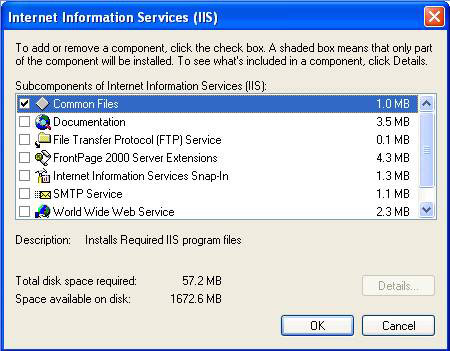
Figure 2: Select the Common Files option to require mandatory installation of Exchange Management Tools
8. Click OK until the Windows Component Wizard window appears again
9. Click Next to complete the Windows Component Wizard
Install the Microsoft .NET Framework 2.0 package
The first package to install on the workstation is .NET framework 2.0.
The installation file is called dotnetfx.exe , just double click on the file. In the first window that appears (Figure 3) click Next , in the next step, click ' Accept the terms of the License Agreement ' and then Install . The next screen will be the final screen telling you that the .NET Framework has been installed.
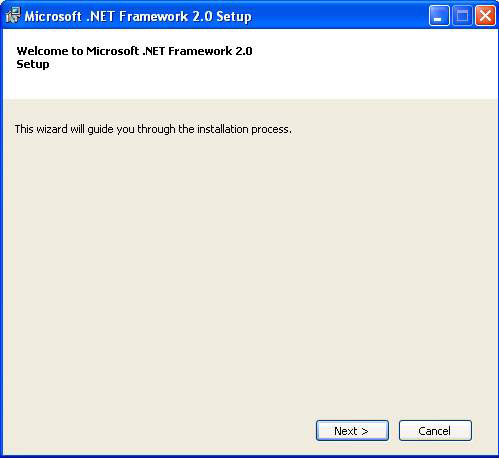
Figure 3: The first screen appears when installing the .NET Framework 2.0
After installing the .NET Framework 2.0, you must install the existing hotfix for it. After downloading this hotfox, just click on it and select OK to install, the screen shown in Figure 4.

Figure 4: Apply hotfox to the .NET Framework
Note : You may receive a message explaining that there is an invalid component with the Windows installation version. If you get this message, you can download and install a newer version of this component from http://www.microsoft.com/downloads/details.aspx?FamilyID=889482fc-5f56-4a38-b838- de776fd4138c & DisplayLang = en
Install Microsoft Management Console 3.0
One of the critical conditions of Exchange Server 2007 is MMC 3.0. To be able to remotely manage Exchange Server 2007 you must install it on your workstation. Download it at http://www.microsoft.com/downloads/details.aspx?familyid=61FC1C66-06F2-463C-82A2-CF20902FFAE0&displaylang=en
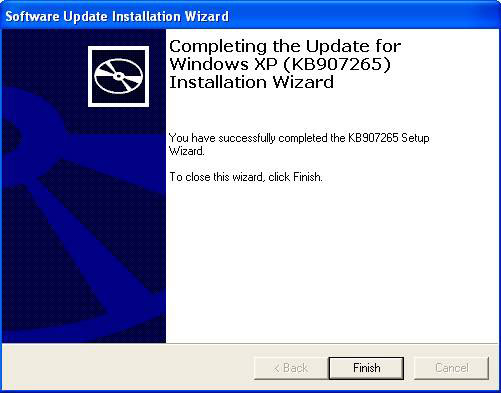
Figure 5: Installing Microsoft Management Console 3.0 on XP workstation
Install Windows PowerShell
This is the last step before actually installing the Exchange Server 2007 Management Tools. The final condition is Windows PowerShell
After downloading the file called WindowsXP-KB926139-x86-ENU (for the 32-bit version), just double-click the file and install the software using the default values.
Download and install 32bit Exchange Server 2007 installation files
After you have completed the above steps for a 32-bit XP computer, you can download the installation files from Microsoft at http://www.microsoft.com/downloads/details.aspx?FamilyID= 6be38633-7248-4532-929b-76e9c677e802 & DisplayLang = en
After downloading, extract the files to a folder on the hard drive. When you double click on this file, you can select a path for the output file and click OK as shown in Figure 6.
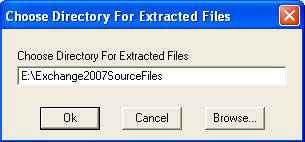
Figure 6: Extract the source files of Exchange Server 2007
You have to wait for the file decompression process and a dialog box will appear saying ' Extraction Complete '.
You can now double-click the Setup file located in the directory of the extracted files (the path is E: Exchange2007SourceFiles in this article ) as shown in Figure 7.

Figure 7: Start installing Exchange Server 2007 Management Tools
You will now see a familiar screen (Figure 8). Start installing Exchange Management Tools:
1. Click Step 4: Install Microsoft Exchange (Figure 8)
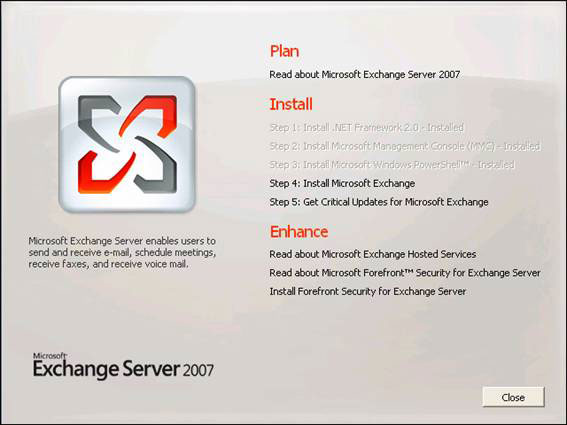
Figure 8: Main screen when installing Exchange Server 2007
2. Introduction . Welcome screen for the Exchange 2007 Installation , click Next
3. License Agreement . Select ' I accept the terms in the license agreement ' and click Next
4. Error Reporting . Set up your selection and click Next
5. Installation type . Click on the Custom Exchange Server Installation section and click Next
6. Server Role Selection . Select the Management Tools option and click Next .

Figure 9: In the Server role Selection screen, select Management Tools only
7. Readiness Checks . You can see if everything is ready for installing Exchange Management Tools (as shown in Figure 10). If there are still a few things to install, you will receive an error listing the things you need to install. Click Install if there are no errors.

Figure 10: Readiness Checks . Everything is fine and you can install it by clicking the Install button
8. Completion . The final screen displays a message saying that the Exchange Management Tools have been installed and ready to use. Click Finish . (Figure 11)
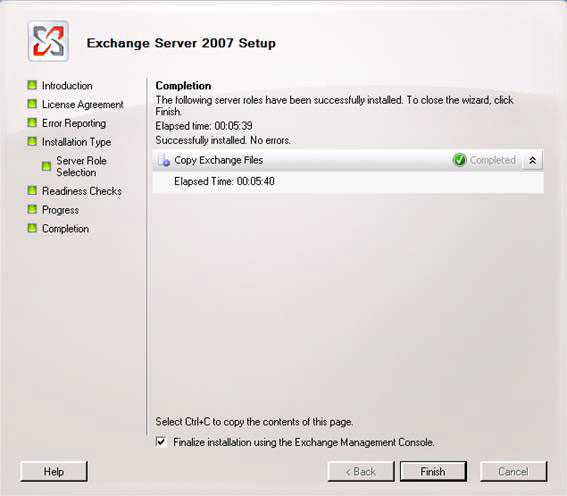
Figure 11: The Exchange Management tools have been installed
Now you can start becoming an Exchange Server 2007 administrator, use the Exchange Management Console or Exchange Management Shell from the Windows XP workstation as shown in Figure 12.
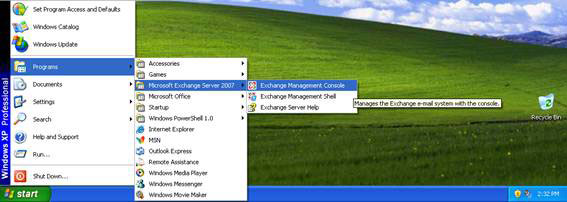
Figure 12: Windows XP with the Exchange Management Tools installed
Test Unified Messaging Role in Windows XP
If you have an Exchange Server 2007 set running the Unified Messaging role, you can use the XP workstation you created to run an application called ExchangeUM TestPhone to perform some checks against the UM server.
To do this, you must copy the files below using a command window from the UM Server for the XP workstation and place it on an exact path on the XP workstation.
- assemblyGAC_32Microsoft.Collaboration.Media Microsoft.Collaboration.Media.dll
- assemblyGAC_MSILMicrosoft.CollaborationMicrosoft.Collaboration.dll
- Exchange Serverbin ExchangeUMTestPhone.exe
- assemblyGAC_32SIPEPS ExchangeVersionNumberSIPEPS.dll
Note : You can create the same directory structure on your XP workstation to match the current directory structure on the UM server.
You can then double-click on the ExchangeUMTestPhone.exe file and start using the Exchange UM Test Phone application as shown in Figure 13
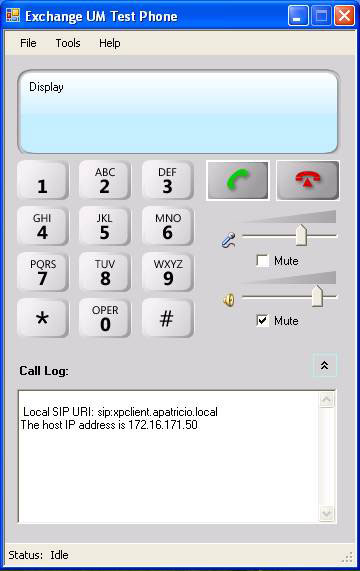
Figure 13: Exchange UM Test Phone
Manage public folders (Public Folders) in Exchange Server 2007
Some administrators do not want to use Exchange Management Shell to manage Public Folders, in which case we offer the following two options:
1. You can wait for Exchange Server 2007 Service Pack 1 with a separate tool to manage Public Folders. For more information you can go to http://www.msexchange.org/tutorials/Managing-Public-Folders-Exchange-Server-2007-Service-Pack1-Beta.html
2. You can install Exchange Server 2003 Exchange System Manager on the workstation to manage Exchange 2007 Public Folders. More information at http://www.msexchange.org/tutorials/Remotely-Administering-Exchange-2003.html
Conclude
This article showed you how to install Exchange Management Tools (Exchange Management Console and Exchange Management Shell) and Exchange UM Test Phone on a workstation running Windows XP.
You should read it
- Remote Exchange 2003 administration
- Mobile messaging in Exchange 2003 - Part 3: Installation, administration, and use of Microsoft Exchange Server ActiveSync Web Administration tool
- Message queues in Exchange 2007
- New Outlook Web Access features in Exchange 2007 SP1
- Transfer mailboxes in Exchange 2007 through the Exchange Management Console
- Installing, configuring and testing Exchange 2007 CCR on Mailbox Server (Part 1)
 Using POP3 and IMAP4 to access Exchange 2007 (Part 1)
Using POP3 and IMAP4 to access Exchange 2007 (Part 1) Instructions for installing Mail Offline on MDaemon program.
Instructions for installing Mail Offline on MDaemon program. Mail Server in Winroute
Mail Server in Winroute MailEnable software is easy for servers
MailEnable software is easy for servers Anti-spam solution for email server with eWall
Anti-spam solution for email server with eWall Exchange Server 2007: ten minutes of instruction
Exchange Server 2007: ten minutes of instruction